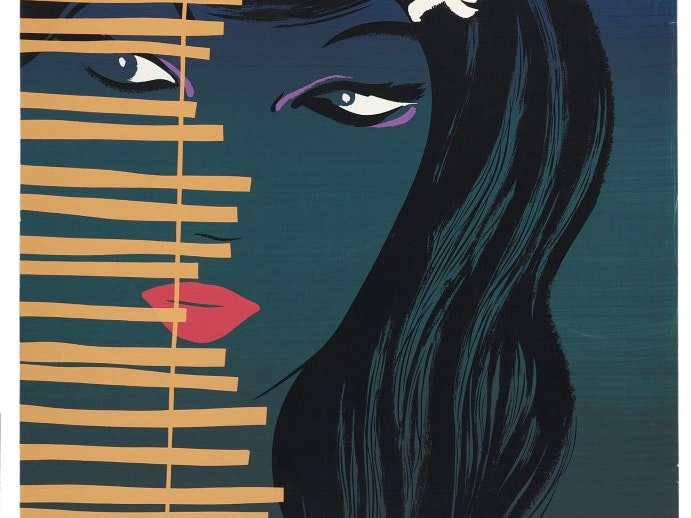
TEAL posters – Air New Zealand’s early days
A vibrant collection of travel posters designed by Arthur Thompson in the 1950s for TEAL, the forerunner of Air New Zealand.
Free museum entry for New Zealanders and people living in New Zealand
Open every day 10am-6pm
(except Christmas Day)
Free museum entry for New Zealanders and people living in New Zealand
How Crown Lynn made a mark for NZ Railways, Air New Zealand, tea shops, and the YWCA.
Crown Lynn crockery was known in the 1940s, '50s and '60s for being sturdy and reliable – a 'no-nonsense' brand. Their heavy indestructible dishes were perfect for hotels, tearooms, and organisations who serviced large volumes of customers.
Mug, circa 1955, New Zealand, by Crown Lynn Potteries Ltd. Purchased 1983. CC BY-NC-ND licence. Te Papa (CG001443)
Ceramics like those made for the Wellington Meat Export Co. Ltd, Duke of Edinburgh Motel, and the YWCA were labelled as 'vitrified', a term that refers to vitrified porcelain a type of extra strength ceramic created by firing at very high temperature.
Cup, circa 1960, New Zealand, by Crown Lynn Potteries Ltd. Purchased 1983. CC BY-NC-ND licence. Te Papa (CG001444)
The low levels of water absorption makes the end product very tough and ideal for heavy duty use in institutional and commercial catering.
Plate, dinner, 1955- 1970s, New Zealand, by Crown Lynn Potteries Ltd. Gift of the YWCA of Aotearoa New Zealand, 2009. CC BY-NC-ND licence. Te Papa (GH012828)
One of Crown Lynn's high-use ranges came to become one of New Zealand's most famous icons – the New Zealand Railways cup and saucer.
In 1939 the outbreak of the Second World War saw the imposition of cargo restrictions, which meant that virtually no pottery was imported into the country.
New Zealand Railways, which provided the bulk of inland public transport in New Zealand, urgently needed replacements for its mugs, which had previously been supplied by British firms.
Cup and Saucer, 1948-1957, Auckland, by Crown Lynn Potteries Ltd. Purchased 1998 with New Zealand Lottery Grants Board funds. CC BY-NC-ND licence. Te Papa (GH009069)
In answer to their request Crown Lynn produced a straw-coloured mug without a handle with the letters 'NZR' stamped on in large block letters under a clear glaze. In 1943 a handle was added.
Like much of the company's production in the early years, the Railways cups were highly functional and sturdy.
Crown Lynn was declared an essential industry during the war, producing durable mugs and cereal bowls for American soldiers in the Pacific. Rank-and-file soldiers were given the Crown Lynn handleless mugs, while the officers received mugs with handles that were probably American-made.
The Crown Lynn lines of military and Railways crockery were highly successful.
Immediately after the war, Crown Lynn began to experiment and diversify, as it saw the need to modernise. Craftsmen were imported from England and new equipment was purchased which enabled a more extensive range to be developed.
This new range included tea sets, art pottery and salad ware, and utilised a variety of innovative decorative techniques such as monogram printing, band brushing and lining.
At the same time the factory laboratory discovered that certain clay, known as Matauri clay, consistently burned white when mixed with five special ingredients. This enabled Crown Lynn to mass-produce tableware decorated with transfers.
By the 1950s, the famous Railway cup was produced on a machine and the logo was a transfer placed on a vitrified body and finished with a clear glaze.
Air New Zealand dinnerware, circa 1965, Auckland, by Crown Lynn Potteries Ltd. Gift of Tony Kerridge, 2009. Te Papa (GH012133/1-10)
This Crown Lynn dinnerware set was designed especially for Air New Zealand's new DC-8s.
The original gold motif was replaced by a more resilient brown one – style was important but so was practicality.
Jet flights were glamourous affairs and the national airline chose this design as part of their plan to showcase the best New Zealand had to offer in terms food and wine, natural flora and fauna, and Māori culture.
Cup, c 1973, New Zealand, by Crown Lynn Potteries Ltd, Mark Cleverley, David Jenkin. Gift of Betty McFadgen, date unknown. CC BY-NC-ND licence. Te Papa (CG001454)
The turquoise with brown Māori motif set for first class passengers was discontinued in 1973, but Crown Lynn picked up an even more lucrative contract that was to service the more numerous economy class.
A dark-brown glazed set with a black Koru, designed by Mark Cleverley and David Jenkin, was the height of fashion at the time. The stackable design made it very practical as well as beautiful.
It was a large commission, they produced 330,000 items for the first order alone.
The partnership between Air New Zealand and Crown Lynn saw many different innovative products come to the fore.
Both companies continuously sought out excellence in cutting edge design. Air New Zealand were often influenced by a desire to showcase their point of difference, and often focused on highlighting the airline's longstanding pacific routes.
Air New Zealand beakers, circa 1970, Auckland, by Crown Lynn Potteries Ltd. Purchased 1996 with New Zealand Lottery Grants Board funds. CC BY-NC-ND licence. Te Papa (CG002474/1-5)
These Crown Lynn cups with their Polynesian motifs appeared on international flights in the 1970s. Etched on the base is 'Air New Zealand knows the South Pacific best'.
By then TEAL and Air New Zealand had been traversing the Pacific for over 20 years.

A vibrant collection of travel posters designed by Arthur Thompson in the 1950s for TEAL, the forerunner of Air New Zealand.

What better way to celebrate summer than through the lens of the golden days of the 1950s and ’60s?